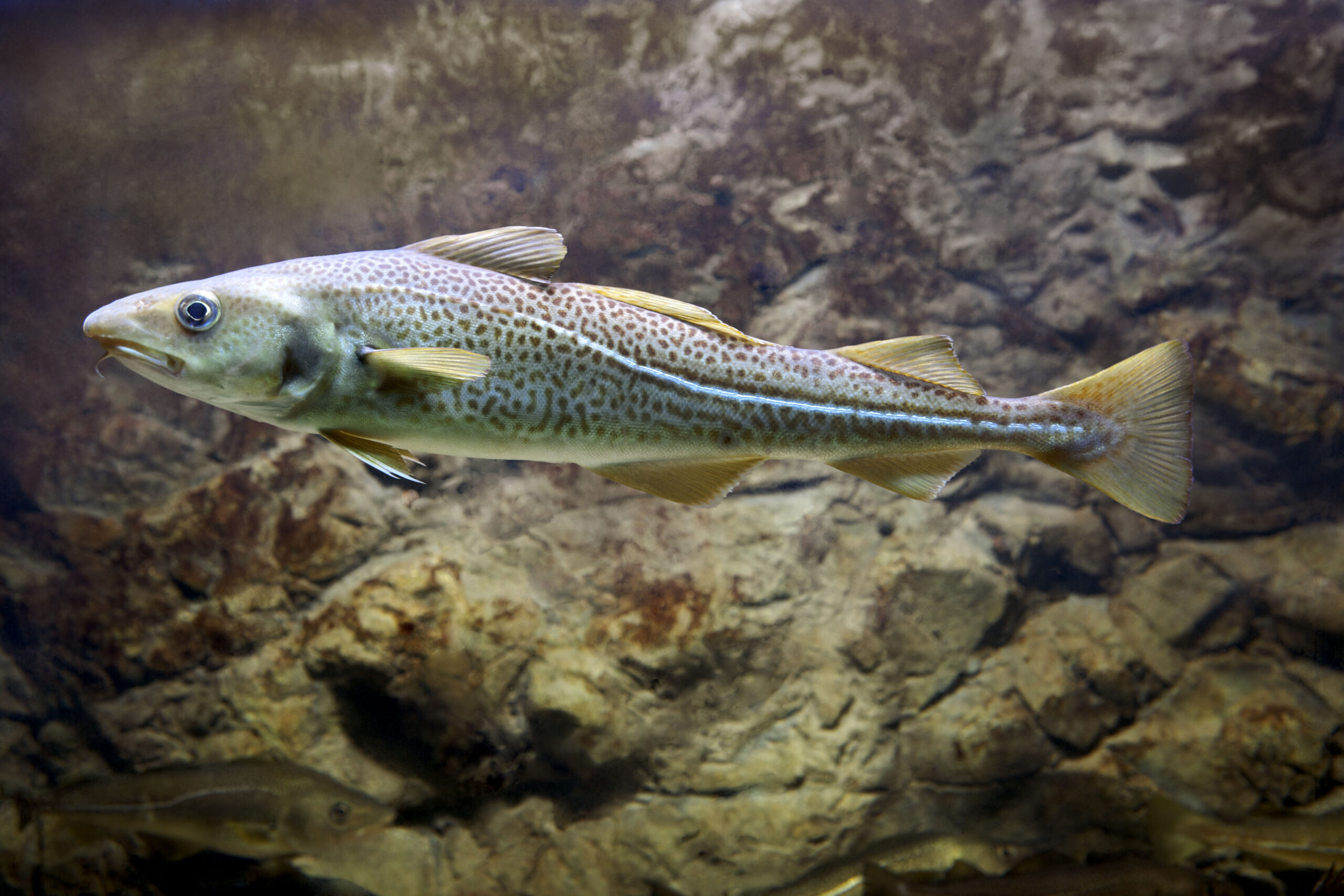
SIZE:
1 to 2 m.
LIFE EXPECTANCY:
Up to 25 years.
LIFE CYCLE:
Atlantic cod reach sexual maturity between 3 and 7 years, 35 to 85 cm in size.
Spawning takes place during the spring at a depth of approximately 150 m, possibly every year.
A metre-long female can lay approximately 5 million eggs in the water column. However, less than one egg per million will live to become a mature cod.

Atlantic cod can be easily recognized by its barbel.
Credit: Robert Baronet, photo taken in the Exploramer basins in 2010.
The Atlantic cod’s body colour varies from grey to reddish brown with darker spots. Its lateral line is paler. Its body is broad in the middle and thins toward the tail. Cod have three dorsal fins and two anal fins. It also has a barbel, which is an organ with gustatory and tactile sensory sensors. It can detect sweet, salty, bitter and acidic foods.
Found in the water column, usually between 100 and 150 m depth, but they can go as deep as 600 m.
The juveniles remain close to the bottom in shallower waters and coastal meadows that protect them from predators.
PREYS:
Herring
Capelin
Sand lances
Deepwater redfish
Squid
Molluscs
Crabs
Depending on its stage in life, cod will not have the same place in the trophic network. The fry feed on plankton, larvae and small crustaceans. Young adult cod eat shrimp and small lobsters. Adult cod are voracious predators.
PREDATORS:
Seals
Sharks
Seabirds
MACHINES:
Gillnet, longline, trawl, jigger, handline.
REGULATIONS:
- Moratorium since 1992.
- Quota of 1000 tonnes in the northern part of the Gulf of St. Lawrence.
In the maritime regions of Québec, cod was the mainstay of the economy. The fishing industry developed because of this species. However, it was fished so much that its biomass collapsed. Since 2010, cod has been designated as a species “at risk of extinction” by COSEWIC. In 2023, the population in the southern part of the Gulf of St. Lawrence continued to decline, whereas that in the northern part appeared to be improving somewhat.
BENEFITS:
The virtues of cod liver oil have been well known for many years: a good source of vitamins A and D, which are known cures for fatigue and for being good for one’s eyesight, skin, etc.
LET’S COOK:
Lean white flesh, which is moist and flaky.
Historically, cod was exported to Europe after being dried and salted. Gaspesians would prepare meals with the leftovers, i.e. the head, jowls and tongue. Certain chefs continue to bring these recipes to life.
Atlantic cod is an integral part of the Gaspesian and Québécois culinary culture. However, as this fish remains at risk of extinction, we suggest you consume another species, such as the silver hake, until it is once again possible to fish for cod.
OUR CULINARY ADVICE:
- Given its endangered status, we do not recommend eating cod.





